Hupac gathers speed on the track to recovery
After the crisis of the last few years, traffic at the intermodal transport terminal in Busto Arsizio and Gallarate is increasing again: +11.9% in 2010. New tracks and possible hiring in the future. The terminal in Sacconago is still not operating.
Optimism and faith in the future are common terms in the company Hupac SpA. Six years after the enlargement of the terminal, which now extends also into the territory of Gallarate, the Italian branch of the company from Chiasso, which is a leader in intermodal rail transport, can legitimately claim that the crisis, which began in 2008 and which went on for two years, is over. The crisis has left its mark in several areas, particularly that of staff. The number of employees at the terminal has fallen from 232, three years ago, to 197, but in April 2010, the company stopped redundancy payments, and the chief executive, Sergio Crespi, has hinted at the possibility of taking on new staff.
The figures speak clearly in favour of the company, which was founded in 1973, and which moved to its new head office, in Via Dogana, in 1992. In 2010, 382,056 items of intermodal transport (containers and semi-trailers) were transhipped, with an increase of 11.9% over the previous year; at the same time, the terminal in Desio, which is much smaller, saw an increase of 5.8%. There was also an increase in the number of routes covered: the new Busto-Barcelona route, with two trains a day, is moderately successful, and there are 25 pairs of trains (one going out and one coming in) passing through the terminal every day; the maximum capacity is 34, which could be reached in 2015. These important volumes of traffic also bring benefits to the whole of the surrounding area. Around the terminal, there are 1300 drivers working every day, and it has been calculated that about 1000 people work in the area of services indirectly connected with the business of Hupac SpA, from catering to workshops.
The services provided the Swiss company also had important effects on the environment. It has been calculated that, in 2010, the transport provided by Hupac as a whole, reduced carbon dioxide emissions by 86%, and energy consumption by 70%, with respect to the similar transport on road, although, the spokesperson, Irmtraut Tonndorf, has pointed out, “There is no conflict between road and rail, in fact, the shareholders of Hupac are road haulage contractors. There is, however, the desire to collaborate, and to provide support to road traffic for long journeys.”
Speaking about the environment, it should be emphasised that, together with the extension of the terminal in Gallarate (which increased the total area of the terminal to 240,000 m2), a protected area with two stretches of water, populated with local flora and fauna, was also created. “Everyone wants intermodal transport,” Sergio Crespi explains, “but few are prepared to endure the environmental impact of a terminal. This is why we wanted to create a compensation biotope that fully respects nature and the local environment.”
There is also a lot of work going on within the terminal. Since the extension of the entry area, which was completed last year, plans for 2011 include building a new link to the sixth track in Gallarate Station (in collaboration with RFI), extending the operational office and organising the check-in and check-out areas. At the same time, the internal workshop, which allows maintenance work to be carried out on rolling stock, inside the terminal, and which currently employs 15 people, will be enlarged.
Of course, not everything is quite so rosy. For example, the new terminal in Sacconago, which extends over an area of 38,000 m2, and which should accommodate two pairs of trains a day, employing 4 people, is still in a situation of deadlock. The issuing of the necessary papers by the council and by the fire brigade is proceeding slowly, and will not be completed before the end of 2011, but even then, there are problems of road conditions that will have to be resolved before the terminal can start operating fully. Moreover, the matter of infrastructure is more general, and regards the entire country. Hupac’s plans for the future are ambitious (over SF 300 million in investments, to reach and exceed one million shipments a year, by 2015), come up against the inadequacy of the railway structures, such as the section that crosses Luino, a single track that was created over 130 years ago. “It took twelve years to build a 700m link on the Sesto Calende-Gallarate line,” Hupac’s director of logistics, Piero Solcà, complains. “We need to take immediate measures to expand the existing lines, in order to make them fit to take longer, heavier and taller trains. Otherwise, people will decide to offload the goods before reaching Italy, and we’ll find them on the road, in the wrong places …”
TAG ARTICOLO
La community di VareseNews
Loro ne fanno già parte
Ultimi commenti
flyman su Ilaria Salis candidata alle europee con Alleanza Verdi Sinistra nel collegio NordOvest
Alberto Gelosia su Ilaria Salis candidata alle europee con Alleanza Verdi Sinistra nel collegio NordOvest
lenny54 su I no vax sono tornati a colpire in provincia: imbrattati i muri della redazione di Varesenews
malauros su I no vax sono tornati a colpire in provincia: imbrattati i muri della redazione di Varesenews
Felice su I no vax sono tornati a colpire in provincia: imbrattati i muri della redazione di Varesenews
PaoloFilterfree su A Varese Salvini prova a ricucire passato e futuro della Lega, ma Bossi non c'è


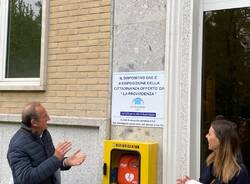
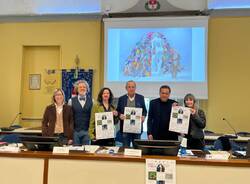

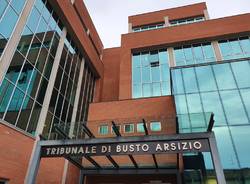
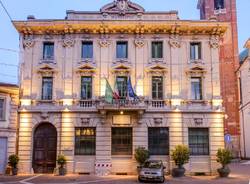



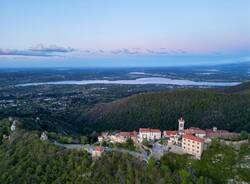




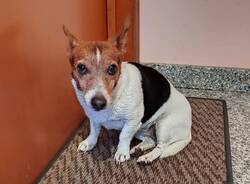


Accedi o registrati per commentare questo articolo.
L'email è richiesta ma non verrà mostrata ai visitatori. Il contenuto di questo commento esprime il pensiero dell'autore e non rappresenta la linea editoriale di VareseNews.it, che rimane autonoma e indipendente. I messaggi inclusi nei commenti non sono testi giornalistici, ma post inviati dai singoli lettori che possono essere automaticamente pubblicati senza filtro preventivo. I commenti che includano uno o più link a siti esterni verranno rimossi in automatico dal sistema.